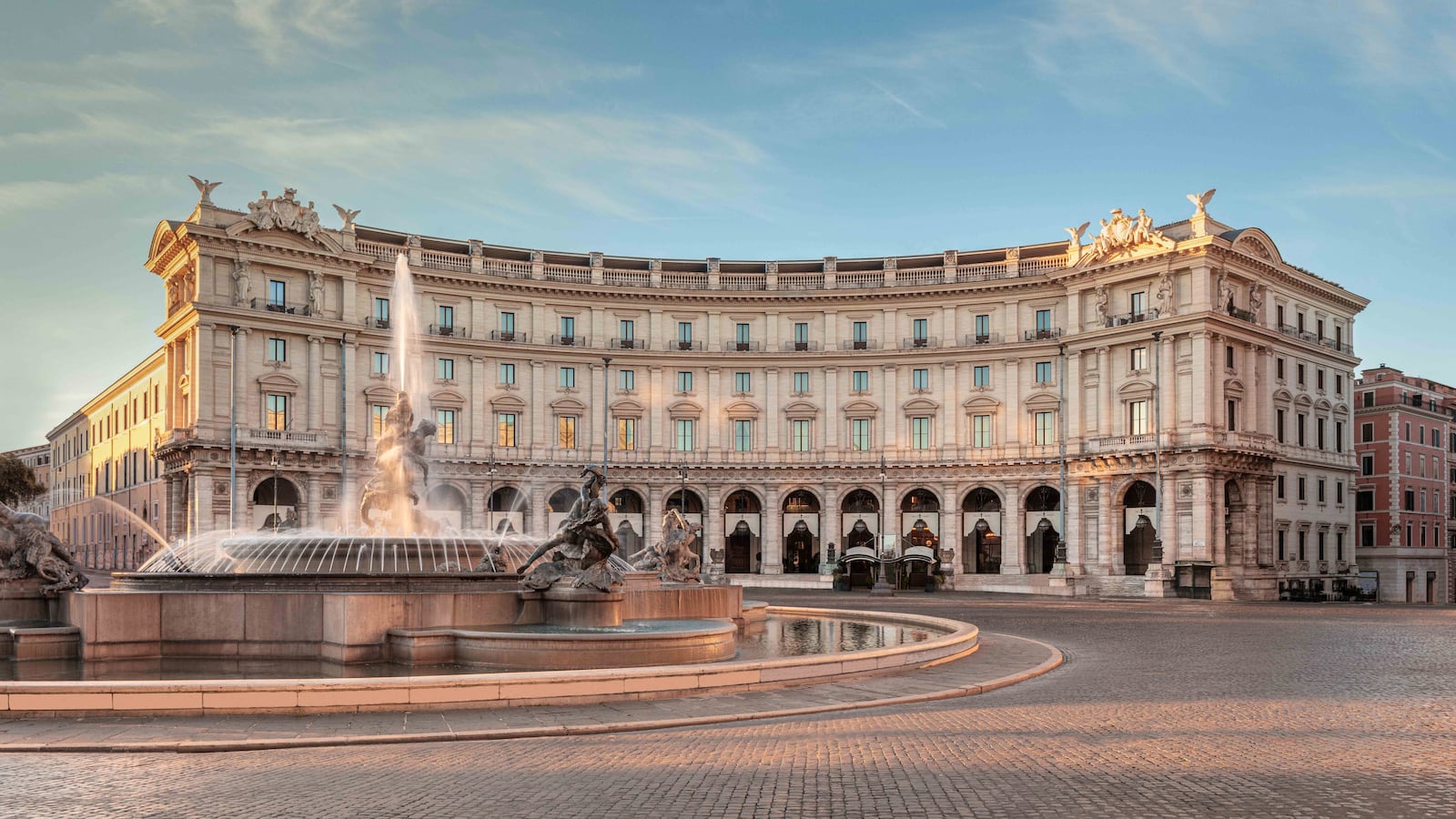Stepping off the train at Termini Station never feels like entering the Rome of a traveler’s imagination. The stripped-down modernist structure doesn’t quite match the drama of the Eternal City splayed out across the hills. It isn’t until you scramble through the bus parking lot in front and skirt the Palazzo Massimo that you’ll finally feel like you’ve really reached Rome. Only once standing on the Piazza della Repubblica do you really think, “Ah, yes, this is Rome!” You have the Baths of Diocletian dangling a taste of Ancient Rome on one side, and on the other, the sensational matching curved porticoed palazzos sheathed in travertine.
Those twin palazzos, redolent of Bernini’s “motherly arms” of St. Peter’s Basilica, were designed in the late 19th century by Gaetano Koch. Koch was an Italian architect who also contributed to the giant white marble typewriter (the Altare della Patria) that dominates the view down the Via Nazionale which splits the palazzos. Today, one of those palazzos is a luxury office building. The other, the Anantara Palazzo Naiadi Rome Hotel, is the latest subject of Room Key, our column on exciting new hotels.
The hotel is entered via the colonnaded walkway decorated with terrazzo floors and sculptural wrought iron lanterns. Inside its revolving doors, the historic interiors have been left intact (it was a hotel known as the Boscolo before Anantara took over and refreshed it) but modernized without stripping away the soul.

A great example of this is the two-story Lobby Bar, perhaps the hotel’s most fetching space. Gone are the pastiche pieces from the previous operation and instead it’s been brought into the 21st century with a smart set of velvet furnishings in a variety of hues and a swanky new curved bar. Tucked just off it is the Monkey Room, an even swankier nook with a book-matched gray marble fireplace.

Around the corner, just past the elevators decked out in yellow marble, is the hotel’s signature restaurant, Ineo. Its antechamber, a dark bar backlit by shelves of origami bird sculptures with a chandelier of tangled lamps, is very cool, the kind of space you’d want to sidle up to at an ungodly hour. Unfortunately, it’s currently being used more as a waiting room for Ineo, one of the only misses you’ll find in the property overall. As for Ineo itself, the space is sumptuous. Gold and plum velvet cover the walls alongside arched mirrors. The space is lit here and there by Gae Aulenti-designed Martinelli Luce lights. The tasting menu we were treated to on the hosted visit included red Sicilian prawns in a mandarin ceviche and a decadent fagottelli ravioli in braised veal sauce. The chef, Heros de Agostinis, was born nearby in Rome, and sees the restaurant as a homecoming of sorts, mixing the smells and tastes of his childhood with his career in restaurants around the world.

The 238 rooms and suites range from those in the grand 19th century palace and overlooking the piazza and its gushing fountain to others in the historic 18th century Clementino wing which has the original exposed wooden ceiling beams from when it was the papal granary. On our hosted stay we were in one of the grand rooms facing the piazza, with floor to ceiling windows framed by heavy drapes, absurdly tall ceilings, and an equally absurdly large gilded mirror running the length of one of the walls. Bathrooms throughout the hotel feature products from Acqua di Parma.
On the roof of the hotel, with views stretching across the city of Rome, is one of the largest rooftop pools I’ve ever seen on a historic five star hotel in Europe. The best view, though, is found around the corner where you see the twin domes and campanile of Santa Maria Maggiore. Also on the rooftop is the latest iteration of Seen, the oontz oontz concept from Olivier da Costa also found in Sao Paulo, Lisbon, Bangkok, and Nice–this one, though, mixes in Italian with the sushi and Brazilian offerings it's known for. (One note: if you’re extremely noise sensitive, get a room a couple floors down from Seen or in the Clementino wing.)
The hotel gets its curved shape from the remains of the exedra of the Baths of Diocletian which you can view from Seen. While the ruins you can and should tour today are across the street, the complex once stretched all the way to where the hotel now stands. On the bottom floor, glassed over ruins of the baths can still be seen. It’s also fitting that the hotel is across and on top of the remains of the baths, as a central part of any Anantara hotel is the spa experience and this property is no different, offering the full ranges of massages and experiences as well as a sauna and hammam, and, just like the Roman baths of old, a full gym.

